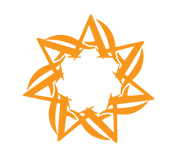Many of us have heard of the clean water issues that face developing nations. Poor economics or infrastructure lead millions of people to die from diseases associated with inadequate water supply, sanitation and hygiene.
WHO Facts:
884 million people lack even a basic drinking-water service, including 159 million people who are dependent on surface water.
Contaminated drinking water is estimated to cause 502 000 diarrheal deaths each year.
Water wells are popular, but those working in the poorest regions of the world know there is no one size fits all solution. The World Health Organization estimate that nearly 423 million people take water from unprotected wells and springs.
Clean water in developing nations is commonly collected through the following ways:
- Protected Groundwater Wells
- Collected Rainwater
- Bottled Water
- Protected Springs
- Public Tap
- Piped Water
Common challenges in procuring clean water and implementing stronger solutions are:
Lack of education.
To understand when water is safe and when it should be avoided people in developing nations must become educated. Many believe that if water comes out of the ground, such as through a well, it is safe to drink.
Government controlled water.
Those downstream do not have control over how water is used or where it is directed.
Contaminated and polluted freshwater bodies.
Without any treatment, large bodies of water are not clean enough to provide drinking water.
Expensive infrastructure to bring water inland.
There just isn’t enough money in most African governments to even start such a costly endeavor.
Receding water tables.
Receding water tables face the whole world, not just developing nations. Water tables are beneath the soil.
As the strain on surface water sources increases, water table will continue to dwindle. Even deep water wells can reduce the water table.
Agriculture uses a majority of water.
Food production is the largest consumer of water. It is the largest unknown factor of future water use as the world population continues to increase.
The severity of water contamination and challenges to procure clean water vary by region. While water wells may work for one region, they may only yield contaminated water in others. When options are limited and clean water sources are few, the Aldelano Solar WaterMaker has a solution. Our WaterMaker can produce up to 1,000 gallons of water per day right from moisture in the air. Air contains billions of gallons of water. Even on a cloudless day, moisture is still present in the form of water vapor.
The Aldelano Solar WaterMaker operates independently of ANY power grid, with virtually NO operating costs.

